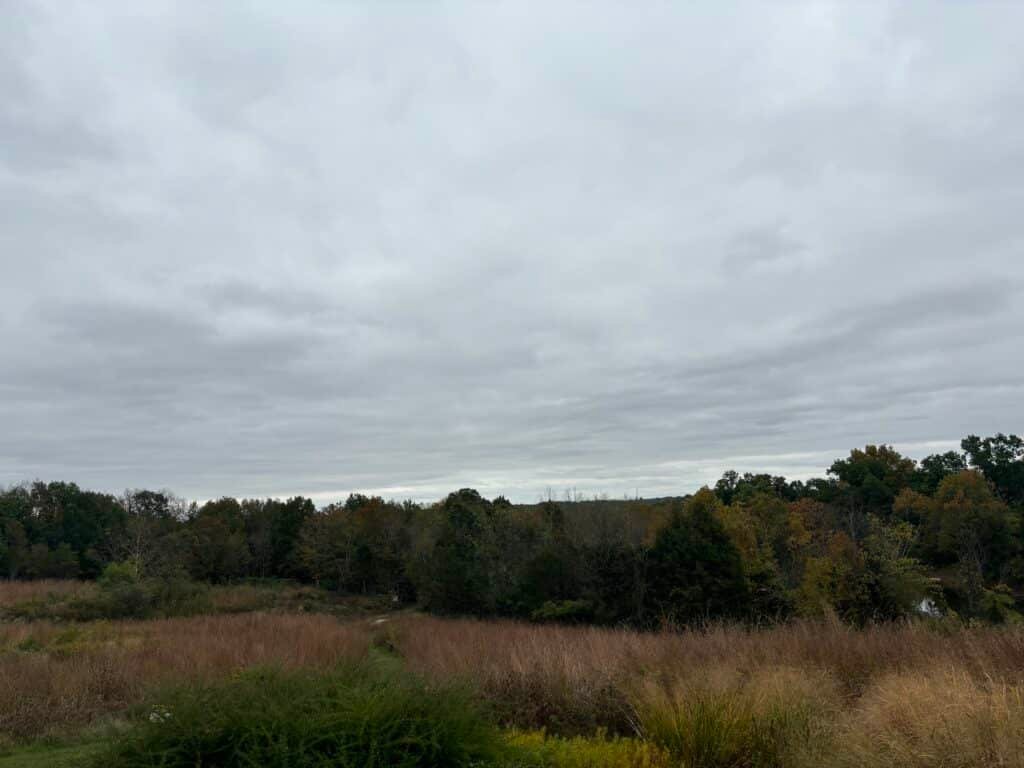It is said in the field of statistics that nothing hides details like an average . . .
Those of us who garden in the greater Louisville area are in what the USDA considers Cold Hardiness Zone 6b to 7a. That means that our average annual minimum temperature (over about a 25 or so year stretch of time) ranges from -5 to +5 degrees Fahrenheit. Forget that I’ve lived in Louisville’s Highlands for 25 years and my garden has never seen sub-zero temps. Forget that the record low at Louisville’s Muhammad Ali Airport is a whopping minus twentysomethingorother . . . An average is just a weighted middle of the road. It says nothing about individual, extreme episodes.
And so it was that Christmas week 2022 threw us all a horticultural and meteorological curve ball . . . maybe a Phil Niekro knuckle ball, now that I think of it.
The low temperature I measured in my garden during that Christmas-week blitz was -9 degrees. The high the next day topped out at +4. The next day wasn’t much better. And if you are suspicious about the accuracy of my home temperature monitoring system, the cardboard-stiff dog towels rolled up and stuffed against the floor and both our front and back doors will serve as competent witness for the
prosecution. It was cold . . . darned cold.
Added to the obvious challenge of the cold, there was that rapid drop. One minute we’re sitting at something around 50 degrees. Seemingly half a cup of coffee later we were looking at the always dreaded minus sign. I guess we can be glad we weren’t in Wyoming where some places dropped from 59 degrees to -20 in less than 6 hours! Thank heavens for small wonders . . .
All you have to do is look around town and you can see signs of damage here and there. At Yew Dell, just two days before the polar blast we had an Asian camellia (‘Ashton’s Ballet’) in full and glorious bloom. Two days later the flowers were frozen solid. The yet to open buds . . . scorched. The formerly lustrous green leaves . . . toast.
But the question is, what exactly happens in a plant exposed to extreme cold weather?
Most plants deal with the cold in a few stages. First, they respond to seasonally cooling temps and shortening daylength of autumn by shutting down growth. That eliminates soft new growth that would barely handle the conditions in your home refrigerator let alone a polar blitz. The second stage of cold tolerance adjustment in plants involves a two-step process “designed” to avoid having ice crystals form inside living cells. If you remember back to your high school biology lessons, plant cells are surrounded by a cell wall – the rigid bit that gives plants their structure (they have no bones, remember) around the inner cell membrane. The balloon-like membrane is easily damaged by any ice crystals that may form inside the cell. And once the cell membrane is damaged . . . well . . . you’re familiar with lettuce that’s gotten too cold in the back of the fridge . . . ? Mush.
But . . . if the ice forms BETWEEN the cells, the rigid cell walls protect the membranes from damage.
So as temperatures drop, plants first concentrate soluble salts and sugars inside the cell membrane to essentially depress the freezing point of the solution. Second, the cells pump water from inside to the spaces in between the cells where if it does eventually freeze, it can do so with little problem.
The problem occurs, then, when the temperature drops so low that the highly concentrated solution inside the cell still can’t avoid forming ice crystals. Once that happens, it’s curtains. If the temperature drops too low, it’s curtains. If it drops too fast, it’s drapes! Either way there’s little the plant can do to successfully cope.
So now the question is, what to do about damaged plants?
First answer is, nothing. That’s right . . . nothing. You’ve probably already felt it – that urge to get out there with those shiny new pruning shears and saws you got in your Christmas stocking and whack away at anything that looks to even rhyme with the word, brown. But there’s a difference between damaged foliage and stems killed outright. The safest thing to do is to just wait until spring and see what leafs out. Once plants start regrowing in spring you can safely go in and prune away what didn’t make it.
But if you just can’t help yourself, the other thing you can do on your woody plants is what we call the thumbnail test. It’s a very complicated and oh so fancy physiological assessment tool . . . you just take your thumbnail and scrape the bark of the branch in question. If it looks bright and green or whitish green under the bark, you’re likely ok, even if the formerly evergreen leaves look like Kroger bags. If the branch under the bark looks brown or feels mushy, it’s probably gone. But sometimes there’s that in between . . . “Honey, can you come look at this? Is it green or brown?” Waiting ‘til spring is never a bad idea.
Also, don’t be surprised if, even though branches check out ok today, some of your trees or shrubs don’t leaf out normally come spring. There’s a syndrome known as, “you’re dead . . . you just don’t know it.” Damage below the bark of the trunk or on older limbs could make it tough on a plant trying to regrow next spring.
Personally, I took advantage of last weekend’s 60-degree temps to cut back the foliage (both brown and green) on my hellebores. This is the time of year to do that anyway. I checked a couple of my bigleaf hydrangeas (H. macrophylla) and they were suspect. I left them alone for now. Figured I’d lay off that knuckle ball . . . for now.
This article was originally submitted to the Courier Journal on January 3, 2023.


